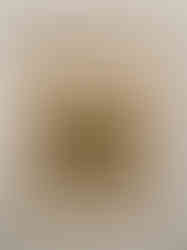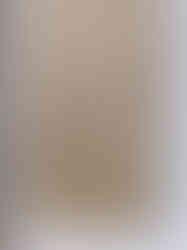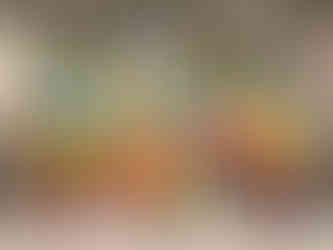top of page
Create Your First Project
Start adding your projects to your portfolio. Click on "Manage Projects" to get started


the art of food: oklahoma contemporary
location
oklahoma contemporary arts center, oklahoma city
date
may 20, 2023
to anyone in oklahoma city, i cannot recommend oklahoma contemporary enough. this arts center (they don't like to call themselves a museum, so as to distance itself from the traditional curation structure) is rather new, and has garnered lots of praise locally, which has quickly grown its reputation as a national institution.
this exhibition, 'the art of food,' featured more than 100 works from 36 contemporary artists, many of which are quite well-known, large names in the field, all focused on the subject of food.


Roy Lichtenstein - Bull Profile Series, Bull I-VI, 1973
Lichtenstein artistically breaks down the recognizable image of a bull into abstraction. The bull is visually segmented more and more through each image, alluding to its eventual butchered state.


Andy Warhol - Banana, 1966
The Velvet Underground's album cover created by Andy Warhol is now iconic in popular culture. The yellow peel is removed, revealing a "pink banana flesh" underneath. Along with the sexual innuendo that the image might conjure, its status as such an iconic logo was solidified when the issue of ownership played out in court.


Roy Lichtenstein - Turkey Shopping Bag, 1964
The Bianchini Gallery's 1956 exhibition, 'The American Supermarket,' blurred the lines between art, performance, consumerism, and mass production. The gallery was lined with aisles and shelves so as to resemble a typical supermarket. The exhibition featured real food products alongside works by various artists that were for sale, including Roy Lichtenstein's 'Turkey Shopping Bag.'


Andy Warhol - Campbell's Soup Can (Tomato), 1966
Warhol's paper shopping bag, containing the image of a Campbell's soup can he made famous, was made for his 1966 exhibition at the Institute of Contemporary Art in Boston. The functional element of the shopping bag highlights the work's separation from what might typically be thought of as art. The so called work of art exists to provide a container to fill with even more purchases, continuing the ironic cycle of consumerism.


Joseph Beuys - Food for Thought, 1977
Joseph Beuys was known for leaning into the theory that everything in life has the potential to be art so long as people approach things creatively. Just like any other work, food allows anyone to become an artist, even through their approach towards taste. The simplicity underscores the power that the words contain. The grease stain on the paper napkin pulls the work towards the insignificant, while the artist's signature evokes all the prestige and respect that a typical painting would have. There is even a transcribed conversation, a list of food, and an excerpt from a medieval Irish poem in the list.


Andy Warhol - Cow, 1966
Art dealer Ivan Karp once suggested to Andy Warhol that he "paint some cows," which he never expected to be taken literally. Warhol created a series of screenprints and wallpaper depicting the Barclay's dairy company's dairy cow, Betty. The repetition of Betty's face represents the many cows in the dairy farms, and tests one's ability to separate their consumption of a meat product from the individual animal. The neatly-packaged, butchered meat at the grocery store furthers people's dissociation from the animal source.


David Gilhooly - Lite/Late Lunch, 1983
A hamburger and its toppings precariously balanced on a topsy-turvy table might accentuate the feeling one gets from supersized portions of food in many American restaurants. Gilhooly references his personal struggles with overeating, finding that making artwork about food limited his cravings while dieting. After dealing with the subject of food in a very hands-on way, Gilhooly said himself that he realized "food itself was becoming sentient, lurking in the background, waiting for us to overstep."


Claes Oldenburg - Tea Bag, 1966
Oldenburg's humor partially comes from his absurd manipulation of scale of normal, everyday objects, as well as his strange use of materials. This tea bag, usually soft and wet, is instead mounted on the wall in sculpted vinyl and plexiglass.


John Baldessari - EMOJI series, 2018
Baldessari's emojis explore how far removed symbols are from their representations of food. Baldessari uses text that forces the viewer to make sense of the connection between words and image, making a humorous point about how distant associations can be.


Malia Jensen - Untitled 4 (Salt Lick), 2010
Yes, that salt lick is shaped like a boob. This sculpture was part of a two-year project resulting in a six-hour film called 'Worth Your Salt' (2020). Artist Malia Jensen placed various salt lick sculptures of human body parts in nature and set up motion-activated cameras to record the surrounding environment. Animals like elk, bears, and turkeys were naturally drawn to the sculptures, not for their artistic forms, but for their nutrients.


Lorna Simpson - C-Ration, 1991
Together, these two photographs speak to the anonymity and degradation that enslaved Black women endured while being forced to labor in Southern white women's kitchens. While this woman is expected to make and serve food, she is not considered good enough to consume the same type of meal herself. Far from relics of the past, caricatures of
enslaved cooks like Aunt Jemima have only recently started to be removed from the shelves of American supermarkets.


Ed Ruscha - News, Mews, Pews, Brews, Stews, Dues, 1970
Ed Ruscha's 'News, Mews, Pews, Brews, Stews & Dues' series continued his fascination with words and their visual and audible aspects. Each consists of one word drawn in a Gothic typeface. The inks used for the prints are an assortment of organic materials, like black currant pie filling, baked beans, and Hershey's chocolate syrup. Ruscha chooses to use these foods differently than their intended function by rendering them inedible and transforming them into art.


Andy Warhol - Perrier, 1983
Warhol enjoyed blurring the lines between advertising and art. This screenprint is only one of roughly 40 designs that Warhol created for Perrier.


Malia Jensen - Butterscape, 2008
Another work by Jensen, who is quickly becoming one of my favorite newly-discovered artists. This 'Butterscape' first appears to be a straightforward representation of a stick of butter, but it has an indentation on the top, as if the heel of someone's palm lightly pressed down on it. The medium and title contradict the nature of the butter as foodstuff, inviting the viewer to contemplate its meaning beyond its edibility.


Joseph Beuys - Capri Battery, 1985
Inspired by his visit to the island of Capri, this work provokes questions surrounding the delicate balance of nature and technology. The piece relies on natural materials as a source for its energy, which is Beuys possibly alluding to the human necessity and reliance on nature. The resemblance in size and color initially make the objects seem similar, even though the permanence of each one varies widely, as the lemon will decay in a matter of days. Beuys also seems to warn of nature's limited capacity to survive the human exploitation it is forced to face.


Damien Hirst - The Last Supper, 1999
Despite their minimalist aesthetic, the 13 screenprints in Damien Hirst's The Last Supper are conceptually complex. In one interpretation, Hirst's use of pharmaceutical aesthetics conveys the overly processed nature of contemporary foods, akin to the chemical concoctions of medications. Seen another way, The Last Supper makes a point about the unwavering faith that some have for pharmaceuticals, consuming them daily as hope for salvation.


Detail: Damien Hirst
- Salad Tablets, from the series The Last Supper, 1999


Enrique Chagoya - The Enlightened Savage, 2002
Chagoya takes Warhol's popular image of the Campbell's Soup can and puts his own twist on it, adding further complexity to Warhol's initial confrontation of American consumer culture. Featuring cannibalistic flavors such as "Model's Meat," "Collector's Broth," and "Art Historian Alphabet," Chagoya's 'Cannibull's' soup is a criticism of the capitalistic nature of the art market.


David Hockney - Caribbean Tea Time, 1987
This folding screen by David Hockney is reminiscent of his set designs for the Metropolitan Opera. The chaotic combinations of cubism and collage establish a busy atmosphere, just like this hypothetical "tea time" in the Caribbean.


Back side: David Hockney - Caribbean Tea Time, 1987


Katherine Ace - Crop Circles 2, 2008
Katherine Ace uses forms of painting and collage to develop her work. 'Crop Circles 2' shows a pile of newspapers, fruit, and flowers, strewn upon a canvas. The cross between realism and abstraction is really visually appealing.
bottom of page